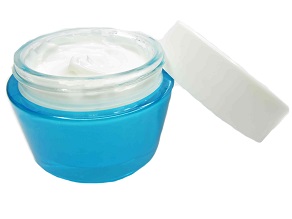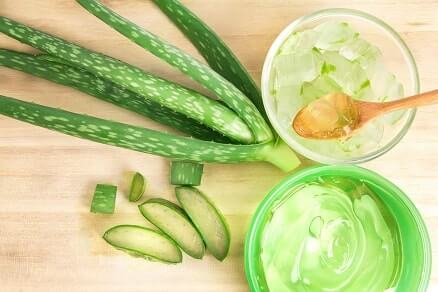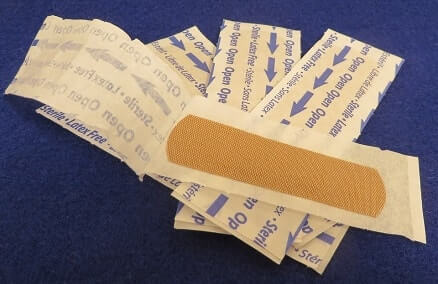

Discovery to Delivery
› Solutions ›Topical

Types of Ointments
The USP and NF Classify Ointment Bases into Four General Groups
1. HYDROCARBON BASES
— Are water-free, and aqueous preparations may only be incorporated into them in small amounts and then with difficulty.USES: HC are use mainly for their emollient effect and not intended for penetration into the skin. They are difficult to wash off. They do not “dry out” or change noticeably upon aging.
2. ABSORPTION BASES
2 TYPES
3. WATER REMOVABLE BASE
— Are oil-in-water emulsion that are capable of being washed from skin or clothing with water. For this reason, they are frequently referred to as “water-washable” ointment base.4. WATER SOLUBLE BASE
— Unlike water-removable bases, which contains both water soluble and water insoluble components. Like water-removable bases, however, water soluble bases are water washable and are commonly referred to as “greaseless” because of the absence of any oleaginous materials.1. INCORPORATION
The components of the ointment are mixed together by various means until a uniform preparation has been attained.
In small scale or in extemporaneous compounding of the Rx, the pharmacist may use 2 means:
In preparing ointment by spatulation, the pharmacist works the ointment with a stainless steel spatula but if the components react with metal (such as iodine, tannins, mercuric salts) the hard rubber is used
Liquid substances or solutions of drugs are added to an ointment only after due consideration of the ointment nature.
An aqueous solution would be added with difficulty to the oleaginous ointment, except in very small amount. However, water absorbable hydrophilic ointment bases would be quite suitable for the absorption and incorporation of the aqueous solution.
In case of hydrophobic base and an aqueous solution is to be added, a portion of the hydrophobic base is replaced by a hydrophilic base.
2. FUSION METHOD
By this method, all or some of the components of an ointment are combined by melting together and cooled with constant stirring until congeal.
Those components not melted are generally added to the congealing mixture as it is cooled and stirred.
The heat labile substances and volatile constituents are added last when temperature is low enough not to cause decomposition.
Packaging and Storage for Ointments
Semisolid pharmaceuticals frequently either in jars or in tubes. The jars may be made of glass, uncolored, colored green, amber or blue or opaque and porcelain white. Plastic jars are used in limited extent. The tubes are made of tin or plastic. These are called “collapsible tube”.
Microbial Content
Meet acceptable standard for microbial test requirementsPreservatives:
– methylparaben,propyl paraben, phenols, benzoic acid, sorbic,quaternary ammonium salts
Example: Betamethasone Valerate Ointment — must be absence of Staphylococcus aureus and Pseudomonas aeriginosa
Minimum Fill Test
— net weight and volumePackaging, Storage, and Labeling
— metal, plastic tubes, jarAdditional Standards
Examine the viscosityTubes May Be Filled By The Following Steps
Pharmaceutical creams are semisolid preparations containing one or more medicinal agents dissolved or dispersed in either a W/O emulsion or an oil-in-water emulsion or in another type of water-washable base. The so-called vanishing creams are oil-in-water emulsions containing large percentages of water and stearic acid or other oleaginous components. After application of the cream, the water evaporates, leaving behind a thin residue fi lm of the stearic acid or other oleaginous component. Chapter 14 discusses the types of emulsions, their physical characteristics, and method of manufacture. Creams fi nd primary application in topical skin products and in products used rectally and vaginally. Many patients and physicians prefer creams to ointments because they are easier to spread and remove. Pharmaceutical manufacturers frequently manufacture topical preparations of a drug in both cream and ointment bases to satisfy the preference of the patient and physician
Are solid emulsion containing suspension or solutions of medicinal agents for external application.

Are semisolid systems consisting of either suspensions made up of small inorganic particles or large organic molecules in an liquid vehicle rendered jelly like by the addition of a GELLING AGENT.
Sometimes called JELLIES.

Preparation of Gels
By freshly precipitating the disperse phase upon reaching an inorganic agents, a gelatinous precipitate results
Example: Preparation of AI(OH)3 gel is by reacting AI(CI)3 + Na2CO3 ➔NaHCO3By direct hydrating the inorganic material in water.
AI2O3 + H2O ➔ AI(OH)3
Examples: Aluminum Hydroxide Gel; Alugel; Amphogel; Ce-lu-gel; Cremalin; Hydroxal; Vanogel; Aluminum Phosphate Gel (Phosphagel) - AntacidDermatologic paste are ointment like preparations employed in practice of dermatology
Usually stiffer, less greasy and more absorptive than ointments such as starch, ZnO, CaCO3, and talc in the base

Characteristics
Types of Paste
Substances intended for external application, made of such materials and consistency as to adhere to the skin and thereby attach as dressing.

Purposes of Plasters

BACK PLASTERS are made of heavy cotton or wool and cotton backing to provide warmth and support.
They are usually used for backache, sore shoulders, sore arms, and other muscular aches.
The active consituents of back plaster is OLEORESINS OF CAPSICUM
EXAMPLES: CHILLI PLASTER; HOT SALONPASPackaging Semi-Solid Preparations
The term dosage form refers to the physical manifestation of a drug as a solid, liquid, or gas that can be used in a particular way. Examples of common dose forms include tablets, capsules, creams, ointments, solutions, injections, and aerosols. The term delivery system has several definitions in healthcare and may include any of the following:
Drug Delivery systems differ in their pharmacological properties; that is, their sites of action, rate of delivery, and quantities of active ingredient delivered differ. Consider, for example, the drug nitroglycerin, commonly used to treat angina pectoris (pain in the chest and left arm associated with a sudden decrease in blood supply to the heart).
Nitroglycerin dilates blood vessels, thus increasing blood supply to the heart and decreasing blood pressure. Three common delivery systems for nitroglycerin are sublingual tablets, placed under the tongue; ointment measured and applied directly on the skin; and transdermal patches, worn on the skin. Sublingual nitroglycerin tablets are fast acting but deliver their active ingredient for only a short period of time, about 30 minutes. Transdermal patches, in contrast, act slowly, with a delivery onset of about 30 minutes, but they can deliver a steady amount of the drug for up to 24 hours. The ointment is much less costly than the patch; it has a similar onset but a shorter duration of effect (up to 12 hours). The choice of delivery system depends on many factors, including the following:
Sprays may be defined as aqueous or oleaginous solutions in the form of coarse droplets or as finely divided solids to be applied topically, most usually to the nasopharyngeal tract or to the skin. Many commercial sprays are used intranasally to relieve nasal congestion and inflammation and to combat infection and contain antihistamines, sympathomimetic agents, and antibiotic substances. Because of the noninvasive nature and quickness with which nasal sprays can deliver medication systemically, in the future, several drugs that typically have been administered by other routes will be taken nasally. Most notably, insulin and glucagon will be administered in this fashion. Research has demonstrated that the administration of glucagon via a nasal spray can relieve hypoglycemic symptoms within 7 minutes, a definite advantage over conventional emergency intravenous glucose or intramuscular glucagon.
Other sprays that are employed against sunburn and heat burn contain local anesthetics, antiseptics, skin protectants, and antipruritics. Throat sprays containing antiseptics, deodorants, and flavorants may be effectively employed to relieve conditions such as halitosis, sore throat, and laryngitis. Other sprays treat athlete’s foot and other fungal infections. Numerous other medicinal and cosmetic uses of sprays are commonly available in pharmacies.
To break up a solution into small particles so that it may be effectively sprayed or to facilitate the spraying of a powder, several mechanical devices are commonly employed. The plastic spray bottle, gently squeezed to issue a spray of its contents, is familiar to most. It is commonly used for nasal decongestant sprays as well as cosmetically, especially for body deodorant products. Recently, one-way pump sprays have been developed to deliver medication into the nose. These sprays are used for both prescription, such as Nasalide (Syntex), and nonprescription, such as Nostrilla (Boehringer Ingelheim), medicines. The advantage of these over conventional sprays is that the design prevents drawback contamination of nasal fluids into the bottle after administration, a definite advantage for someone trying to cope with viruses associated with the common cold. Pharmacists are familiar with medicinal atomizers, which emit medication in the form of fi ne droplets. One type of atomizer has a rubber bulb at the end of the apparatus, which when squeezed causes a flow of air, some of which enters the glass reservoir and some of which exits from the opposite end of the system. The air forced into the reservoir causes the liquid to rise in a small dip tube, forcing the solution up and into the stream of air exiting the system. The air and the solution are forced through a jet opening and the liquid is broken up into a spray, the droplets being carried by the airstream. In other similar apparatus, the stream of air caused by the depression of the bulb does not enter the reservoir of solution but passes swiftly over it, creating a pressure change and sucking the liquid into the dip tube and into the airstream, in which it exits the system.
A variety of medicinal substances are employed topically in the mouth for a number of purposes and in a wide range of dosage forms. Among the drugs and preparations included in this group are the following:
Liniments are alcoholic or oleaginous solutions or emulsions of various medicinal substances intended to be rubbed on the skin. Liniments with an alcoholic or hydroalcoholic vehicle are useful when rubefacient, counterirritant, or penetrating action is desired; oleaginous liniments are employed primarily when massage is desired. By their nature, oleaginous liniments are less irritating to the skin than alcoholic liniments. Liniments are not applied to skin areas that are broken or bruised because excessive irritation might result. The vehicle for a liniment should therefore be selected for the type of action desired (rubefacient, counterirritant, or massage) and also on the solubility of the desired components in the various solvents. For oleaginous liniments, the solvent may be a fixed oil such as almond oil, peanut oil, sesame oil, or cottonseed oil or a volatile substance such as wintergreen oil or turpentine, or it may be a combination of fixed and volatile oils.
All liniments should bear a label indicating that they are suitable only for external use and must never be taken internally. Liniments that are emulsions or that contain insoluble matter must be shaken thoroughly before use to ensure even distribution of the dispersed phase, and these preparations should be labeled shake well. Liniments should be stored in tight containers. Depending on their individual ingredients, liniments are prepared in the same manner as solutions, emulsions, or suspensions, as the case may warrant.
Collodions are liquid preparations composed of pyroxylin dissolved in a solvent mixture usually composed of alcohol and ether with or without added medicinal substances. Pyroxylin (i.e., nitrocellulose, soluble gun cotton, collodion cotton, etc.), obtained by the action of a mixture of nitric and sulfuric acids on cotton, consists chiefl y of cellulose tetranitrate. It has the appearance of raw cotton when dry but is harsh to the touch. It is frequently available commercially moistened with about 30% alcohol or other similar solvent. One part of pyroxylin is slowly but completely soluble in 25 parts of a mixture of 3 volumes of ether and 1 volume of alcohol. It is also soluble in acetone and glacial acetic acid. Pyroxylin is precipitated from solution in these solvents upon the addition of water. Pyroxylin, like collodions, is exceedingly flammable and must be stored away from flame in well-closed containers, protected from light.
Collodions are intended for external use. When applied to the skin with a fi ne camel’s hair brush or glass applicator, the solvent rapidly evaporates, leaving a filmy residue of pyroxylin. This provides an occlusive protective coating to the skin, and when the collodion is medicated, it leaves a thin layer of that medication firmly placed against the skin. Naturally, collodions must be applied to dry tissues to adhere to the skin’s surface. The products must be clearly labeled “for external use only” or with words of similar effect.
Collodion is a clear or slightly opalescent viscous liquid prepared by dissolving pyroxylin (4% w/v) in a 3:1 mixture of ether and alcohol. The resulting solution is highly volatile and flammable and should be preserved in a tight container remote from fi re at a temperature not exceeding 30°C.
The product is capable of forming a protective fi lm on application to the skin and the volatilization of the solvent. The fi lm is useful in holding the edges of an incised wound together. However, its presence on the skin is uncomfortable because of its inflexible nature. The following product, which is fl exible, has a greater appeal when a pliable fi lm is acceptable.
Flexible Collodion
Flexible collodion is prepared by adding 2% camphor and 3% castor oil to collodion. The castor oil renders the product fl exible, permitting its comfortable use over skin areas that are normally moved, such as joints, fi ngers, and toes. The camphor makes the product waterproof. Physicians frequently apply the coating over bandages or stitched incisions to make them waterproof and to protect them from external stress.
Salicylic Acid Collodion
Salicylic acid collodion is a 10% solution of salicylic acid in flexible collodion. It is used for its keratolytic effects, especially in the removal of corns from the toes. Patients who use such products should be advised about their proper use. The product should be applied one drop at a time on the corn or wart, allowing time to dry before the next drop is added. Because salicylic acid can irritate normal, healthy skin, every attempt must be made to ensure application directly on the corn or wart. A useful preventive measure is to line the adjacent healthy skin with some white petrolatum prior to application of the product. Proper tightening and storage of the product after use are absolutely necessary because of the volatility of the vehicle.
Sign up to our newsletter and receive the latest news and updates about our products!
